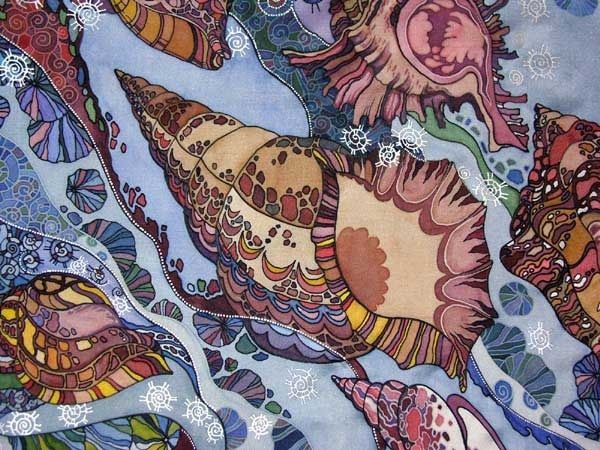Batik art (from the Javanese ambatik that consist of amba means "to write, wide, or large" and tik or nitik means "dot" or "make a dot") is a technique of wax-resist dyeing applied to the whole cloth by hand with fixing the borders of individual colours with special compounds (paraffin, varnishes, rubber glue). These compounds are called the resist. For this technique, cotton, silk, synthetics and wool are used, paint adheres well to them. Depending on the method of fixing the pattern, tie-dyeing, hot, cold batik and free painting are distinguished.

The hot batik technique uses a cotton cloth and heated wax as a resist. It is applied to fragments that should remain unpainted, or in order to separate one color from another. After finishing the work, the wax is removed from the fabric.
Cold or European batik is created mainly on silk using aniline dyes and cold resist (rubber or gasoline-based). This technique is more difficult to perform, as the image, in contrast to hot batik, is applied with a one-touch technique.
The tie-dyeing technique or bandan appeared in India. Small knots were tied on a clean cloth and fastened with threads. After applying the paint, the knots were untied, and a pattern in the form of white dots appeared on the material.
Free painting is made without using resists.
Cold or European batik is created mainly on silk using aniline dyes and cold resist (rubber or gasoline-based). This technique is more difficult to perform, as the image, in contrast to hot batik, is applied with a one-touch technique.
The tie-dyeing technique or bandan appeared in India. Small knots were tied on a clean cloth and fastened with threads. After applying the paint, the knots were untied, and a pattern in the form of white dots appeared on the material.
Free painting is made without using resists.







